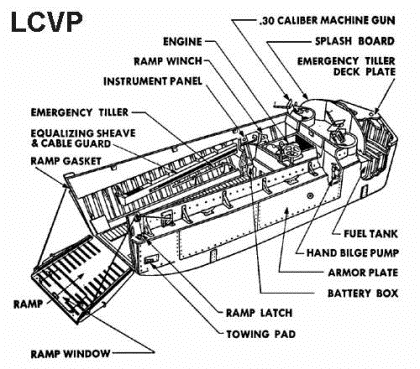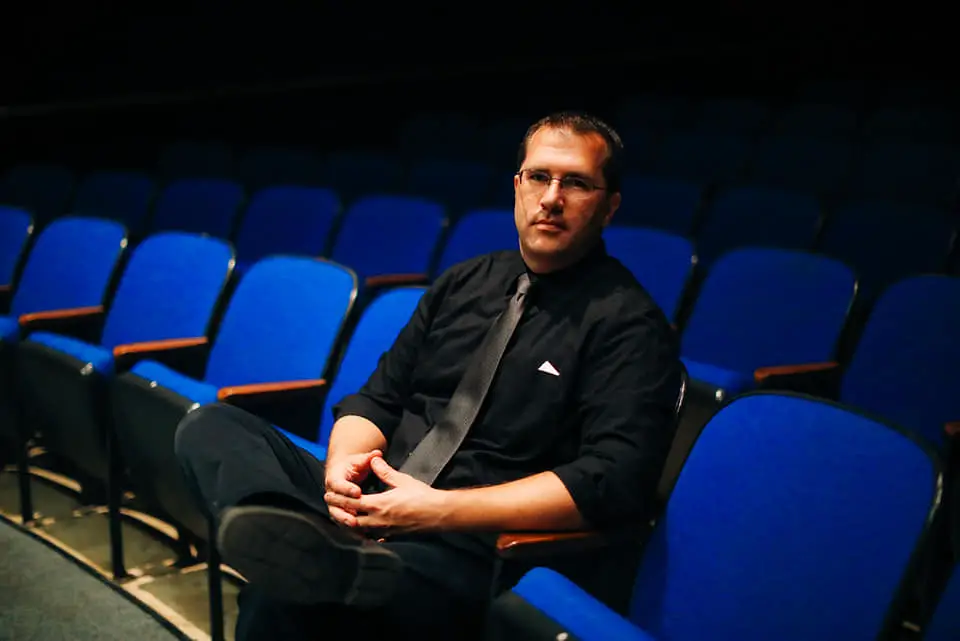 the 1930s, the United States Navy had a ‘small boat’ problem. They were adept at building large boats like cruisers, battleships, and aircraft carriers, but they struggled to make a smaller craft for the purpose of amphibious landings. Historically, those landings had to take place at ports, because the Navy had no capability to land on beaches due to the size of boats and their inability to operate in shallow water.
the 1930s, the United States Navy had a ‘small boat’ problem. They were adept at building large boats like cruisers, battleships, and aircraft carriers, but they struggled to make a smaller craft for the purpose of amphibious landings. Historically, those landings had to take place at ports, because the Navy had no capability to land on beaches due to the size of boats and their inability to operate in shallow water.
This automatically gave the defenders the advantage, as they could mine the harbors and concentrate their defenses in a few spots. If the Navy could solve this problem, they would be able to land almost anywhere and spread out the enemy’s defenses to lessen the casualties in amphibious operations.
This was the Navy’s focus in the years before they were drawn into the worldwide conflagration of the Second World War. They didn’t know it yet, but a lumberman and boatbuilder from New Orleans would end up being the key to solving this thorny problem, which would forever change the course of World War II and amphibious landings in general.
That man was Andrew Higgins, who was possessed with a quick temper and a mouth to match. It’s said that he had an incredible imagination and never met a challenge he didn’t think he could overcome. In the early part of his career in the logging business, Higgins had developed a boat with a recessed propeller and very shallow draft, perfect for pulling logs out of the shallow Louisiana bayous [1]. These ideas eventually evolved into what Higgins called the Eureka Boat, and it would go on to become the blueprint for all the boats he designed for the Navy. The key was the propeller being recessed into the hull of the boat, along with special hull construction that allowed the boat to work in much shallower water without the propeller getting stuck in the sea bottom, and gave it excellent speed and maneuverability even in water choked with debris [2].
Throughout the 1930s, Higgins worked hard to sell his boats to the military. He succeeded in getting through to the Coast Guard and the Marine Corps, but the Navy had its own ideas and designs, and thus wasn’t interested in what Higgins had to offer. Famously, Higgins went to the Bureau of Ships to argue for a chance to show what his boat could do, and upon seeing a copy of the boat design blueprints for what the Navy was designing, wrote on it “This boat stinks — A.J.H.” [3]. Unsurprisingly, the Navy’s design failed during trials, and Higgins would finally have his shot. Once they saw what the Eureka Boat could do, the government quickly awarded Higgins the contract to build craft for the Navy.

The first adaptation of the Eureka Boat for military use was as a landing craft for soldiers, known as the LCP(L), or Landing Craft Personnel, Large. It was used to land troops in North Africa and also on the Pacific island of Guadalcanal. It had one flaw, however, in that troops disembarking had to go over the side of the boat, exposing them to enemy fire. So Higgins adapted the design of the pre-existing LCV, or Landing Craft Vehicle, giving his design a front-loading ramp and thus creating the hybrid LCVP, or Landing Craft Vehicle and Personnel [4]. It was this hybrid that would earn the name “Higgins Boat” and go on to become his most famous work. On December 8, 1941, the day after the Japanese attacked the US Navy at Pearl Harbor, Higgins filed the patent for the LCVP [3].

Now that the design was finished, the Navy’s need for the ship across both the European and Pacific theaters was boundless. Higgins set his focus on adapting his workforce for mass production. In 1938 his workforce was only seventy-five people, but by 1943 he had twenty thousand people under his employ. He is credited with having the first integrated workforce in New Orleans and was said to hire anyone with good ideas who would work hard. He employed undrafted men, African Americans, women, and even disabled folks, and they were all paid the same wages depending on the jobs they held [4].
This disparate employee base exceeded anyone’s expectations (except perhaps those of Higgins), and produced more than 20,000 boats by the end of the war. The Higgins Boat was used everywhere in the war, but the role for which it is most famous and recognized was its service in the D-Day landings, where it was used to land the 1st Army Division at Omaha Beach, the most heavily defended of all landing zones in Operation Overlord. The boats were present in Africa, Italy, and even in Germany late in 1945 [4]. At one point during the war, boats designed by Higgins Industries made up approximately ninety-two percent of the entire US Navy’s complement of ships [2].
“Andrew Higgins is the man who won the war for us… If Higgins had not designed and built those LCVPs (Landing Craft, Vehicle and Personnel), we never could have landed over an open beach. The whole strategy of the war would have been different.” — President Dwight D. Eisenhower [1]
Andrew Higgins passed away in 1952, but his legacy is and always will be the boats he built that helped the Allies win the war against the Nazis. He was honored with induction to the National Inventor’s Hall of Fame in 2019, and in New Orleans, the road where the National WWII Museum sits bears his name [3]. He left an indelible mark on the country and the city of New Orleans, and the world owes a debt of gratitude to his ingenuity and zeal.
Sources:
[1]. Stanford University. “The Higgins Boat”
[2]. Strahan, Jerry E. (1994) “Andrew Jackson Higgins and the Boats that Won World War II”
[3]. United States Patent and Trademark Office — “The patented boat that won the war”
[4]. National WWII Museum — “Research Starters: Higgins Boats”

Entrepreneur, writer, editor, lover of history, gaming, and more topics than I have time to explore.





